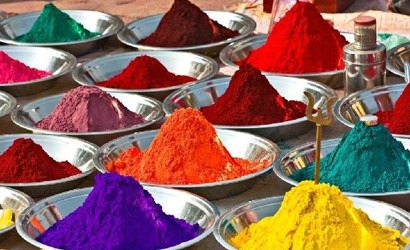
15 May Dyes and Printing and Dyeing
According to the properties and application methods of dyes, dyes can be classified as follows.
By state
Water-based color paste Oily color paste Water-based color essential oil color concentrate
By use
Ceramic Pigment Paint Pigment Textile Pigment Plastic Pigment
By source
Natural dyes are plant dyes, animal dyes, synthetic dyes (also known as artificial dyes) according to their usage
According to the properties and application of dyes
Direct Dyes Insoluble Azo Dyes Reactive Dyes Reductive Dyes Soluble Reductive Dyes Sulfur Reduction Dyes Phthalocyanine Dyes Oxidative Polycondensation Dyes Disperse Dyes Acidic Dyes and Acidic Medium-containing Dyes Basic and Cationic Dyes
Direct dyes
This kind of dyestuff can be directly dyed on cotton, hemp, silk, wool and other fibers without relying on other medicines. The dyeing method is simple, the chromatogram is complete and the cost is low. However, the fastness to washing and sunshine is poor. If proper post-treatment is adopted, the fastness of dyed products can be improved.
Chromized Gold-Containing Dye-Qinzhu Pigment
Chromized Gold-Containing Dye-Qinzhu Pigment
reactive dye
Also known as reactive dyes. This kind of dyestuff is a new type of dyestuff developed only in the 1950s. Its molecular structure contains one or more active groups. Under appropriate conditions, it can react with fibers to form covalent bonds. It can be used for dyeing cotton, linen, silk, wool, viscose, nylon, vinylon and other textiles.
Sulfur dyes
Most of these dyes are insoluble in water and organic solvents, but they can be dissolved in alkali sulfide solution and dyed directly after dissolution. But because the dye solution is too alkaline, it is not suitable for dyeing protein fibers. This kind of dyestuff has the advantages of homogeneous chromatography, low price, good color fastness, but not bright color.
Disperse dyes
This kind of dyestuff has low solubility in water and fine particles. It is dispersed in dyeing solution and belongs to non-ionic dyestuff. It is mainly used for dyeing polyester fibers. Its dyeing fastness is high.
Acid dyes
These dyes are water-soluble and contain water-soluble genes such as sulfonate and carboxyl groups. Protein fibers can be dyed directly in acidic, weak acidic or neutral media, but the fastness to wet treatment is poor.
coating
Suitable for all fibers, through resin mechanical attachment fibers, dark fabrics will harden, but the color set is very accurate, most of the light fastness, washing fastness is good, especially in medium and light colors.


